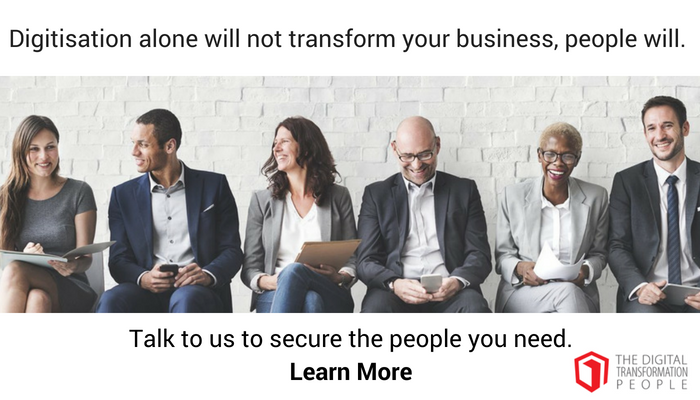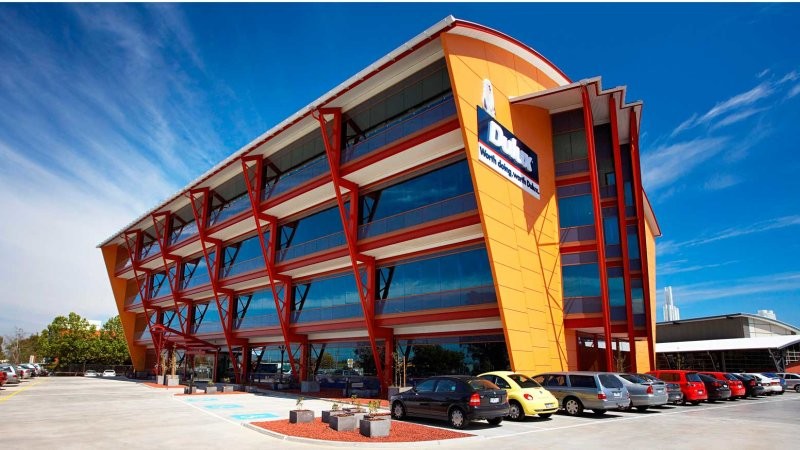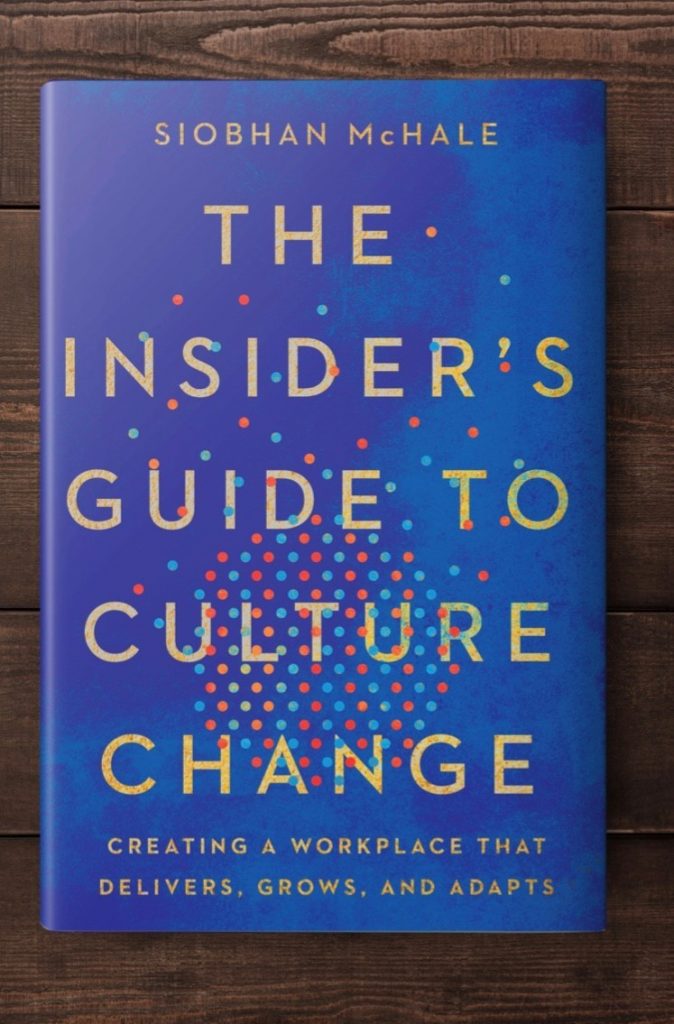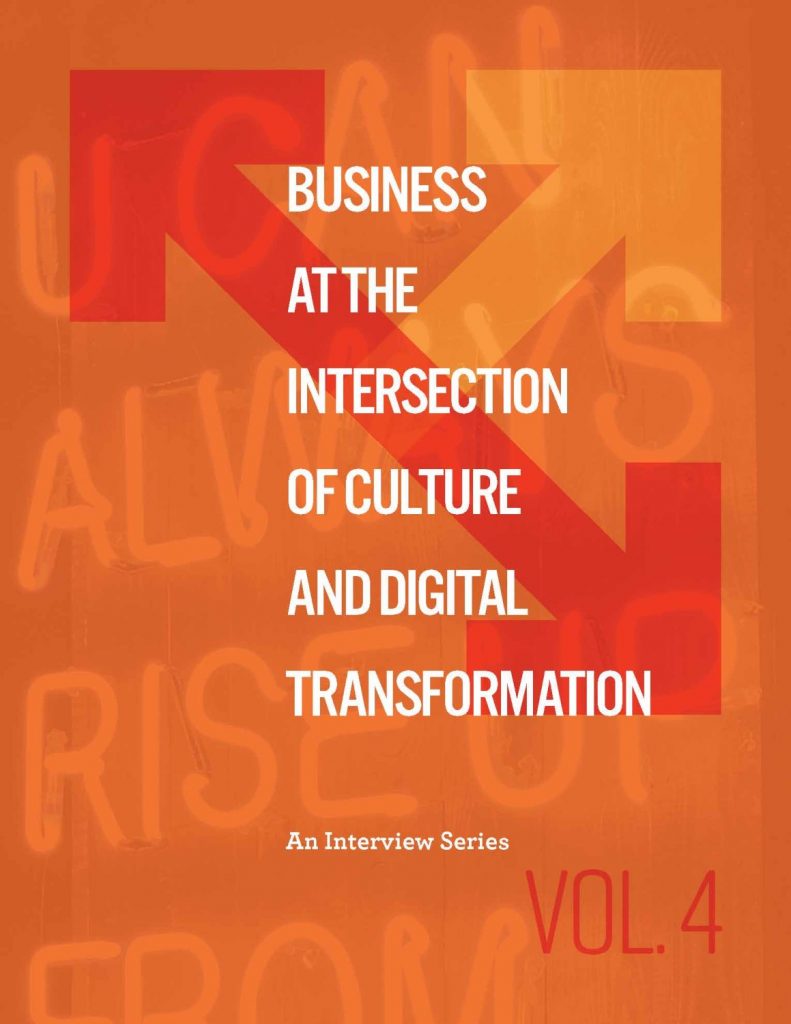In the two years since this passion project began, it has been wonderful to see the breadth of participants discussing Culture and Digital Transformation grow internationally. From Canada to the UK, from Argentina to the United States and now, in this interview, those participants include Australia.
I’ve found that my Australian culture connections are some of the most informed, passionate and engaged folks on the topic of culture. Few are as passionate as Siobhan McHale who is the EGM of People, Culture and Change at The Dulux Group in Melbourne, Australia and author of the recently published book “The Insider’s Guide to Culture Change” who is a real thought-provoking catalyst on any culture-related topic.
HB: Siobhan, it’s a delight to reach you in Melbourne. Before we start, I wanted to extend my personal sympathies to you for the terrible fires we’re watching blaze across your beautiful country. I’m hoping you and yours are safe amidst all that tragedy.
SM: Thank you. It certainly is a very sad, and dire, situation we’re facing in Australia. So much devastation, such a loss of life and property. I do hope, from this global recognition of what’s going on here, that it triggers a global shift to more consciousness about climate and the macro levers that we can pull rather than just continuing to ignore it. So, yeah, it’s a dire situation but I remain optimistic that real changes can, and will, be made.
HB: You and I have had several fascinating LinkedIn conversations over the past two years and you’ve recently published your 1st book, which I’m very keen to get into. Can we start though with who you are and a little bit about your background?
SM: Absolutely. Well, I’m the Executive General Manager of People, Culture and Change at the Dulux Group based here in Melbourne. Many of your readers likely know Dulux as the international paint company. I was originally born in Ireland and came to Australia in 1994. In what I call my first career, I studied organizational psychology and spent a decade operating as a management consultant where I basically worked with major companies advising leaders about how to manage change and how to manage culture change, in particular.
Then, standing outside of Chicago’s O’Hare Airport on one of those consulting engagements, I had this epiphany of sorts. I thought, “You know, I’ve sort of been this “outsider” for a decade, but I want more skin in the game. I want to actually make culture change happen and put into practice all the tools and theories that I’d been learning about and teaching about.”
So, standing in the taxi rank outside Chicago’s busiest airport, I decided I wanted to become an “insider” and to implement change from the inside. So, I went and joined a series of large, multinational organizations as the head of Change and Culture Change.
One of those roles was at ANZ Bank in Australia where, after three years, I was appointed as the Global Head of Culture Change which was an incredibly rewarding role. During that time our Culture Change program became a Harvard Business School case study used by Professor John Kotter, the renowned Change Management guru.
Of course, it was very rewarding to have John Kotter highlight our ANZ work with his MBA students, but it also was a realization for me that my work could have an impact beyond the organization that I was working in. So, I began to think about my role as an educator, as well as a change leader in an organization because now could see how my work could help people across other organizations to create better workplaces.
So, four years ago, marked another transition for me, which has lead to my current role at DuluxGroup where I’ve been tasked to help the organization’s leaders create a more growth-oriented and customer centric culture.
In fact, as testimony to the great strides we’ve already made, in August 2019 we were acquired by Nippon Paints, the fourth largest paint company in the world, who recognized our positive culture and the excellent business results DuluxGroup had been posting. Over the past nine years, while we were listed on the Australian stock exchange, we were ranked as the third highest performing company in terms of returns to shareholders.
HB: What a remarkable journey. I can’t wait to read more about that Kotter case study in your book and see what you were up to at ANZ. What I’m struck by is that you appear to have worked for organizations and Executives who saw Culture as an accelerant for growth and financial success. That isn’t how Culture, sadly, is often seen – an accelerant for financial success and growth. Can we talk more about that?
SM: Absolutely and it’s a great point. One of my core beliefs is that culture is co-created, and it never comes about by management edict. So, when I joined DuluxGroup, I knew that the CEO and the leadership team were trying to accelerate this growth-oriented culture. To add momentum to that change we started by reframing the role of the top 200 executives in the company from, “I run the business” to “I run and grow the business.” This was central to an entire program we called, “Grow and Think Beyond”, which was about delivery growth and thinking beyond – that was really a pivotal shift.
So rather than a small number of Executives trying to grow the company, we now had all the top 200 executives stepping into the role of a growth leader, not just a delivery leader. This fundamental reframing of the role of the leader was an accelerant to our growth ambitions.
HB: That reframing seems like a very powerful motivator to drive different behaviours. And I’m sure a very different culture and set of expectations inside DuluxGroup?
SM: Absolutely. This is one of the things I talk about in my book “The Insider’s Guide to Culture Change” – the power of role reframing. When we think about change in terms of key levers that drive behavioral change, one of these is instincts. These are often very deeply wired for us as human beings, making them hard to change – the instinct to survive, the instinct for connection, the instinct to protect your family.
Then a second way of influencing change is through personality – as our personality can directly influence how we behave. Traits like introversion, risk taking, gregariousness and generosity are core parts of our personality and can shape the way we respond. These personality factors influence our actions, and again, they can be incredibly hard to change.
In my experience, there is a third and equally powerful way to affect behaviour change – through role and the power of role reframing. In many organizations that’s so often overlooked.
Let me give you an example of what I mean by role reframing. Each morning when you wake up Hilton, you go downstairs and make your wife a coffee, in the role of loving husband. You drive your kids to school in the role of caring parent. You get on the train and go to work, switching into role of commuter and behaving in a certain way.
Then you go to your office and through your workday you switch into a number of different roles. In the morning you might take up the role of teacher with a new employee; at lunchtime you step into the role of advisor with a colleague who is having trouble with a tough client; and then later that afternoon you meet with your boss and switch into role of negotiator to get some additional funding for a critical project. You switch effortlessly into these multiple roles and the mental map you hold about each role profoundly influences your behavior.
So, if we can change the mental maps that people (and different parts of the business) hold about their role, then we can bring about faster change. Modifying the role, not the person can accelerate change, often with much less noise.
So, while the prevalent notion is that culture change can take years, it can actually happen much more quickly than we have been taught to believe.
HB: I’d say, in my experience, the apprehension to really lean into Culture change is the time horizon. It’s going to take forever. Why start something that I might not even be around to see change. Behaviours here are so deeply ingrained, how could we ever start to modify or change those. Care to comment?
SM: Yes, I’ve certainly heard the very same sentiment myself. However, I’ve seen exactly that kind of rapid change first-hand at ANZ. In the course of a few years, ANZ bank transformed from the worst performing bank in the country, into one of the highest performing and best regarded banks in the world. And the number one bank on the Dow Jones sustainability index.
It was under John MacFarlane, the CEO at the time, that the transformation of the bank happened. One of the critical things he did was recognize the deeply embedded way of relating between Head Office and the branches. There were 700 branches in the bank who saw their role as “order takers”, who were forced to take directives from Head Office – who were in role of the “order givers”.
Those roles were deeply engrained on both sides. At the branches, the employees would shrug at customers and say, “sorry we can’t serve you better, our hands are tied”. We needed to reframe their roles and put the branch employees into the role of “service providers”, not passive order takers and we needed to reframe the Head Office role to “support provider” to the branches, not “order giver”.
We started simply with a program that opened the eyes of our Head Office staff by ensuring they all spent a day at the branches. Those visits made them realize, “Wow, this is really hard.” They got to see first-hand the lines of customers shuffling and waiting for service and dreary conditions at the branches compared to the opulent environment in head office. That immersion was a significant step to help reframe the roles and relationships between the branches and Head Office.
Within 18 months we’d reached a tipping point, where we had momentum building and although the whole change ultimately took seven years, within 18 months we got to what I call the critical mass. That’s the really important turning point during any culture change, where the momentum swings in your favour – and more people start to move with you, rather than against you. This is the point at which people go from cynicism to thinking: “This is a change that I can believe in; this is a leadership team that I can trust.”
HB: That’s a remarkable story. So, does this reframing exercise ultimately mean that both attitudinal and behavioral dimensions are affected? Is this ultimately a way of accelerating a different attitude, or frame, that then leads to different leadership behaviors?
SM: Correct. Essentially everybody carries around a mental map of their role in their head. But we seldom discuss, examine or share these mental maps – yet they are guiding our actions within organizations.
Mental maps are like the GPS in our cars – they direct our actions and they shape our behaviours. But like a GPS they can also become outdated.
So rather than sending people on skills workshops, which we often do during culture change, you can start to change the mental maps. In the ANZ example, we examined the roles of the individual parts (Head Office and the Branches) and the inter-relatedness between these parts. We noticed a pattern of relating between them: “You are to blame for poor customer service”.
This blame pattern was going around and around with both parts fuelling it – and no one was focusing on the needs of the customer! We needed to see the role and the relatedness between the parts before we could start to shift the culture. Again, we asked ‘what new roles and patterns need to be in place in order to achieve the business outcomes?’ I often say culture is not a “nice to have”. Culture is a key enabler of your business strategy and goals.
HB: Fascinating. Organizations often spend considerable time and energy building out a set of Values, and then millions of dollars communicating those. Others go deeper and say “without tying real behaviours to these values, our organization will never thrive.” Your contention is organizations could do all those things but unless they were really exploring the roles, and pre-existing mental maps, and patterns between key operational areas, they won’t see the culture change they want?
SM: Exactly. It’s less about the interpersonal relationships, that Values and Behaviour exercises create, and more about the relatedness between the parts of the business. So, at ANZ Bank, reframing the branches to see themselves as the “service provider” to customers and the Head Office as “support giver” to the branches.
That role reframing shifted the responsibility for handling customer problems to the branches, which was significant. No more shrugging shoulders and saying their hands were tied, the branches had full ownership of solving the customer problem. We shifted the pattern of relating between the Branches and Head Office to: “We work together to provide excellent service to our customers”. Working with role, role relatedness and breaking the old patterns allowed us to bring about faster change, with less noise.
HB: Could we look at an organization struggling right now – like Boeing – where it appears parts of the organization from engineers to the C-Suite and the various teams responsible for safety oversight are in open warfare. Do you see this exercise of reframing roles and responsibilities could be an effective strategy for the culture change they need?
SM: Certainly. I think it absolutely could be part of the answer. Of course, I don’t know specifically where Boeing’s issues stem from but that’s why I’d recommend a deep-dive culture diagnostic as step one. Organizations typically don’t carry out a comprehensive diagnosis at the beginning of culture change, which is where they make their first wrong turn. As we discussed earlier, new leaders often automatically go into defining and rolling out new Values as the default solution. Whereas a deep-dive diagnostic would identify the underlying issues at Boeing.
The culture never sits in one part, in isolation. What are the patterns (or hidden agreements) that connect the different parts of the organization? What are the deeply embedded patterns that are running the (Boeing) culture and where are those patterns being fueled from?
That’s what I would be exploring. Without that analysis, you’re going to be putting a plaster or a BandAid over the wound, without really healing it.
HB: Do you see the people responsible for culture and culture change inside organizations have either the orientation or the background to do this kind of diagnostic? Are they able to, or is this a case of they’re also in their own mental map that doesn’t hold them responsible for the sort of thing?
SM: Great, great question. Firstly, I think when you’re in the “system”, it’s often hard to see the patterns. It’s like when you’re part of a family, and the family is dysfunctional, you often can’t see the issues – because, for you it’s normal. But outside the family, you look and think, wow, that’s very dysfunctional behavior.
Organizations aren’t any different. We become blind to (and caught by) the dysfunctional patterns. That is why it can be valuable to hire “outsiders” to help us see what we may have become blind to. These external advisors can provide us with a different lens on the organisation.
The second thing is also the framing of how leaders perceive their roles. In many cases, leaders see their role to run the business, but they do not necessarily see their role to lead and manage changes to the culture. Unless they reframe their role as the change leader then we’ll continue to see culture change initiatives fail. I often say that you can’t delegate culture change to HR.
One of my previous clients complained to me once that, the company had spent a year on culture change but it had gotten very little traction on creating a higher performing and more accountable culture. So, I simply asked him, “where are you spending your time?” It turned out that this CEO was spending 90% of his time with clients and client- facing initiatives, and he saw this as his role.
He was spending very little time and effort leading the culture change initiative. Once he reframed his role, the CEO started to get traction on the transformation almost immediately. Again, reframing roles changed critical behaviours and momentum could build quickly.
HB: I could talk to you for hours but I’m keen to cover some of the prevailing myths about culture you see out there. What culture myths or misinformation drives you crazy?
SM: With pleasure. I think that one of the most deep-seated myths is that culture is just about individual values and behaviors. When culture is actually collective, it’s not sitting just at the individual level. Culture is the patterns of thinking and relating between the parts. But we have not necessarily been taught how to see these patterns and ways of relating. We’ve been trained instead to look for singular, root causes.
I often say that in workplace culture, you’ve got to be able to distinguish the ‘dancer’ from the ‘dance’ – the behaviours from the patterns.
Another major myth is that culture change can be led by well-intentioned “champions” or “change agents”. This seldom works out well. Giving “champions” the primary responsibility for leading the culture transformation is typically the death knell for the change. The more that the champions step into the leadership role, the more that line managers take a step backwards: The transformation is now seen as “someone else’s responsibility” and the change invariably stalls.
Line managers (at all levels) must step into their role to lead the culture change in their parts of the business. Delegating the change to well-intentioned champions usually only results in noise, confusion and delays in achieving the desired outcomes. Leaders must take up their role (with HR’s help) to take a step back or “zoom out” to identify the patterns that are no longer serving the business.
HB: What a great metaphor for retaining objectivity. So for somebody reading this and recognizing they need to recalibrate their thinking, where do they start?
SM: I get it. Well, without blowing my own trumpet, I do articulate this new way of thinking in my book. I have an “insider’s” perspective on what really works when it comes to culture change. I give readers the four steps to create a workplace that delivers, grows and adapts.
I talk about, for example, the importance of diagnosing the big patterns that are running your culture, and how you go about doing this. I also give examples of reframing and how you might deploy this technique to bring about faster change, with less noise. The book which captures what I’ve learned over the course of my 30-year career as both insider and outsider driving culture change.
HB: I’ve got one final question for you. Is there anything that we haven’t covered that you really have a burning desire to get off your chest and make sure that we capture?
SM: Perhaps one point I feel deeply about. I would say that in an increasingly VUCA world that leaders and HR professionals need to lean more into their culture and change roles: Roles that we haven’t really traditionally been equipped for.
Many aren’t given the toolkit to do that and they’re doing it by trial and error and sadly the results haven’t been great judging by the high failure rate of most change initiatives. So, I would be encouraging people to lean more into that change role and to equip themselves with tools to take up that role.
HB: Brilliant Siobhan. You’ve been incredibly generous with your time. Again, thank you and my very best wishes for a swift end to those terrible fires.
SM: Thank you. I really appreciate the good wishes. Look forward to our next LinkedIn conversation.
Article by channel:
Everything you need to know about Digital Transformation
The best articles, news and events direct to your inbox













